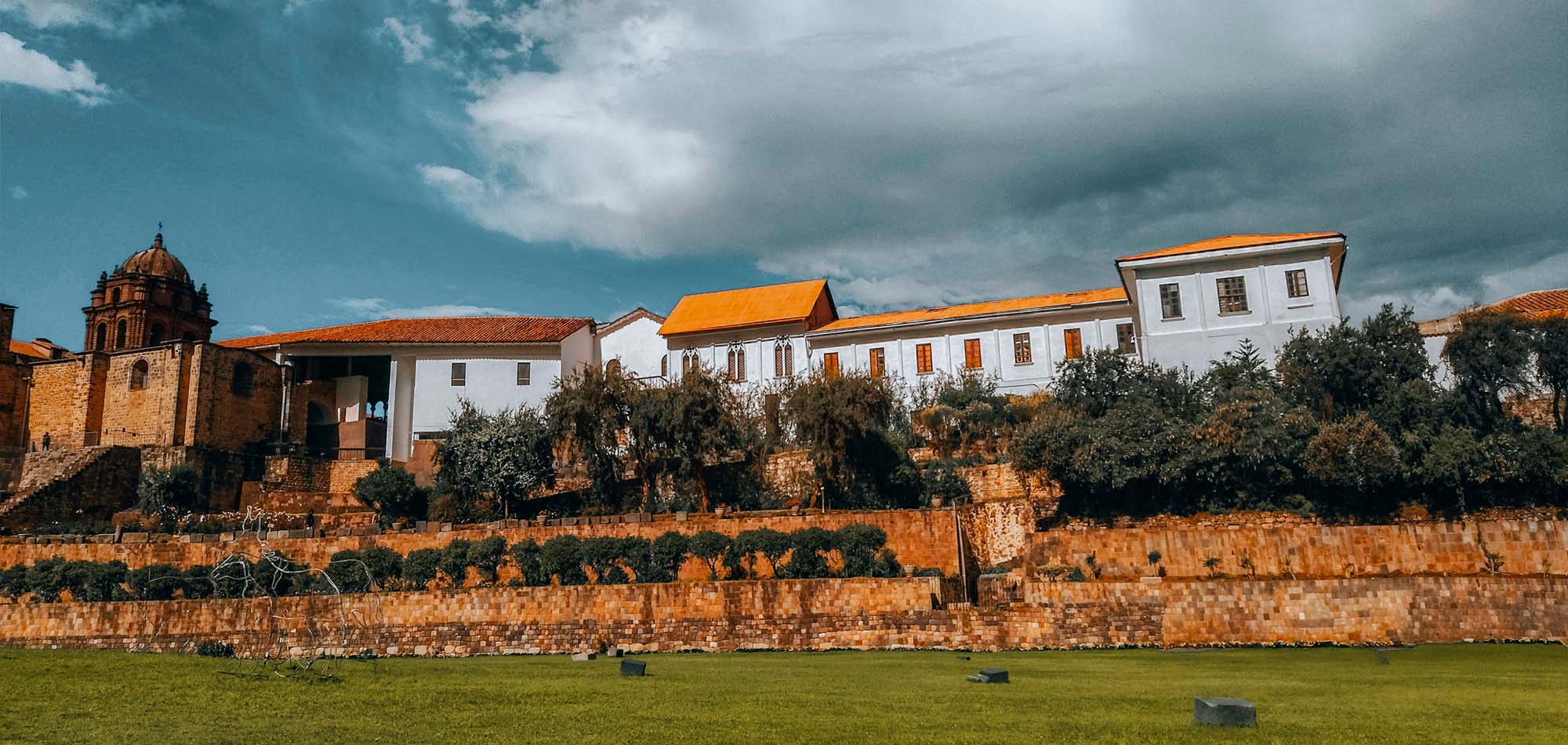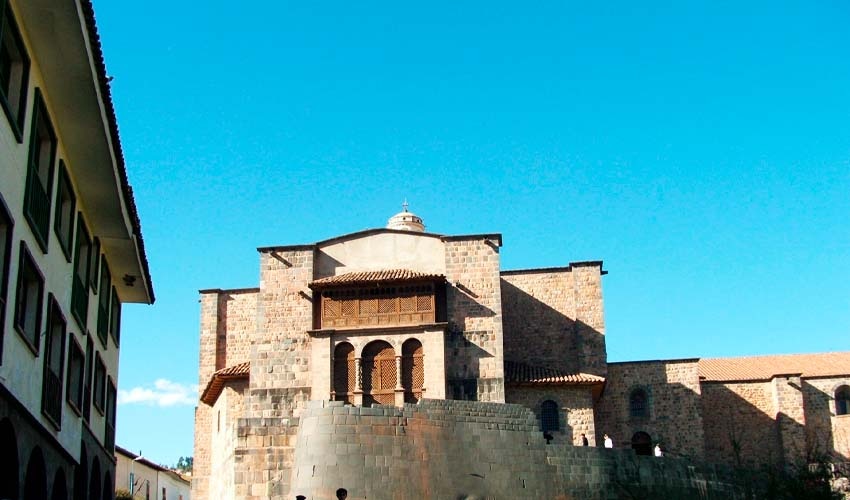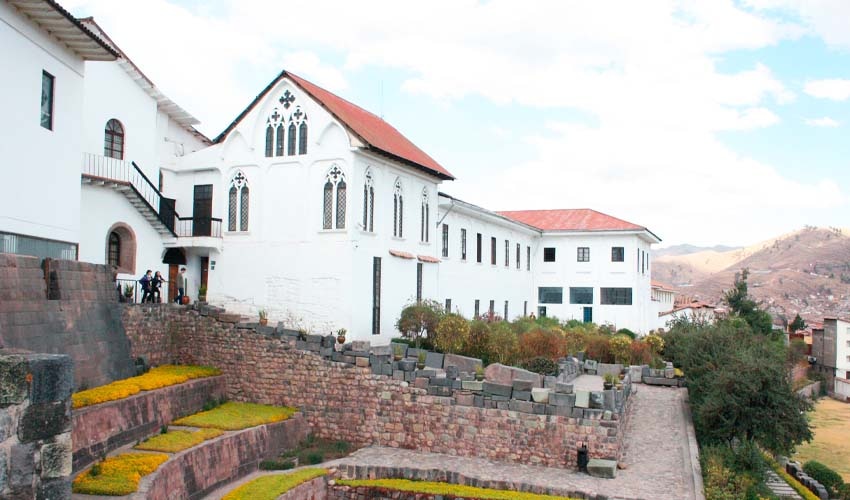
Coricancha or Qurikacha in Quechua (quri «gold» and kancha «enclosure») is the most prominent and central structure in ancient and modern Cusco. It´s an extraordinary live narration of the fusion of Inca and Hispanic culture. It was the center of all that was the Inca empire and still remains the center of all that modern Cusco has become.
It was an emblem of the prowess of the great Inca Empire. Known as the Temple of the Sun, it was sacred and revered building used to worship Inti «The Sun God». It´s the embodiment of the extensive knowledge of astronomy and architecture that the Incas had.
Coricancha was the most important religious temple of Cusco, in the capital of Tawantinsuyo, the territory of the Incas empire. It was built in 1438 by Manco Capac and devoted to the Sun. To construct it, they used ashlar masonry, whereby similar sized cuboid stones where perfectly cut and placed together without using any mortar to bond them together. The placement was so perfect, that you could not fit a sheet of paper between each stone. The walls, angled inward for seismic resistance, stand strong, attesting to the Inca’s engineering genius. Various rooms in the interior where covered with sheets of gold and silver and the courtyard was decorated with golden statues.
Upon their arrival, the Spanish had captured the Inca Sapa Atahualpa and demanded a ransom of gold to be paid for his release. Most of that gold was stripped from Coricancha. Then proceeding that the great wars of the 16th century saw major destruction to the temple. After the Spanish had claimed victory, they used the foundations of the temple to build the Santa Domingo Convent. The convent went through 3 major earthquakes in 1650,1749 and 1950. The original Inca Architecture survived all the earthquakes, however Spanish Architecture didn´t. UNESCO over saw the rebuilding in 1956, ensuring that the Inca architecture was preserved and became the most prominent part of the structure. From the spectacular monument of Coricancha was reborn.

Qorikancha construction reflects the dual pillars of Inca civilization, architectural expertise and profound astronomical knowledge. Within the ancient beauty of Qorikancha, we can observe a civilization far advanced for its time.
What´s evident within the structure is their focus on celestial alignments, underscoring the significance of Inca astronomy. The Incas religious beliefs was a complicated system and studied the constellation, they believed everything within our world was connected and integrating their cosmological knowledge into their constructions. For instance, during the winter solstice, sunlight would flood the temple’s main chamber, a testament to the Incas’ precise calendrical system.
The temple complex also featured a sophisticated sundial. This instrument, known as an Intihuatana, was a tangible demonstration of the Incas’ timekeeping mastery. Besides, Qorikancha housed dedicated enclosures for celestial bodies, mirroring the cosmos on earth. Its stonework and celestial alignment reflect the Inca’s advanced understanding of the world around them.

If you are looking to visit the beautiful Coricancha temple, it is available every day of the week.
Entrances fees:
Single Entry (only Coricancha):
Cusco Tourist Ticket: 130 soles ($40 USD) for adults, which allows access to 16 attractions in Cusco and the Sacred Valley for 10 days, Coricancha included
It is very easy to get to Coricancha, the Sun Temple in Cusco; you can get there from the Cusco main square heading towards Avenida El Sol and walking no more than 400 meters to the south. Finally, you will arrive at the archaeological site that is recognizable from a considerable distance, in front of the building is a well manicured park. It is situated on Santo Domingo street. Another option is to simply take a taxi and tell them you are heading to Coricancha. It should not cost more than S/ 10 within the city of Cusco and all taxi drivers know where it is.
After the conquest, the Coricancha was sacked by the Spanish invaders. Many structures of the enclosure were destroyed. Today, only some of its constructions are maintained.